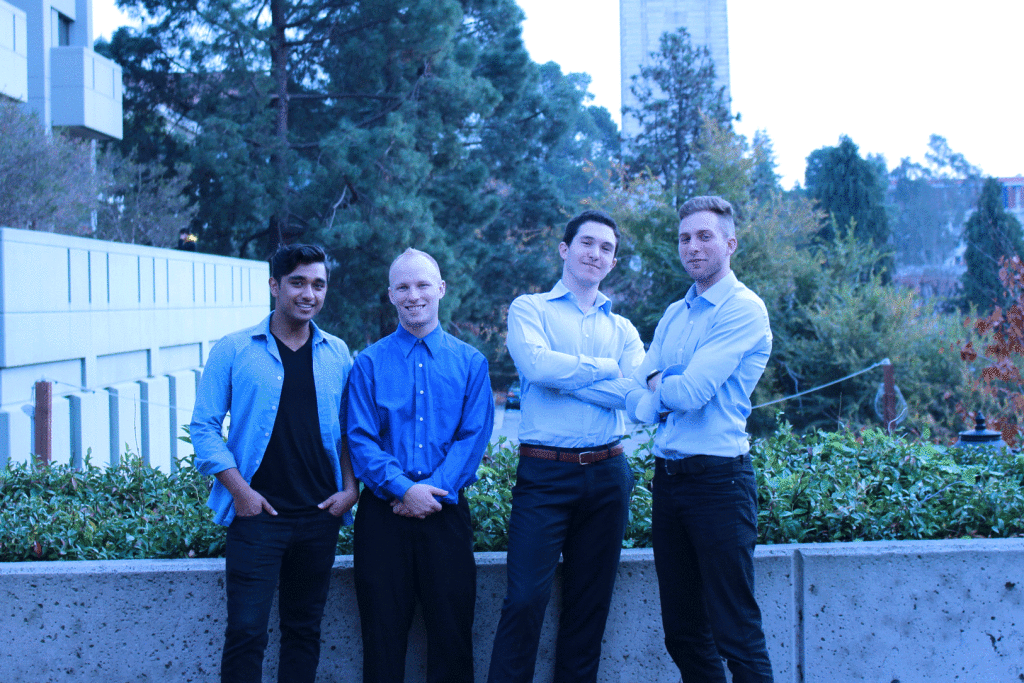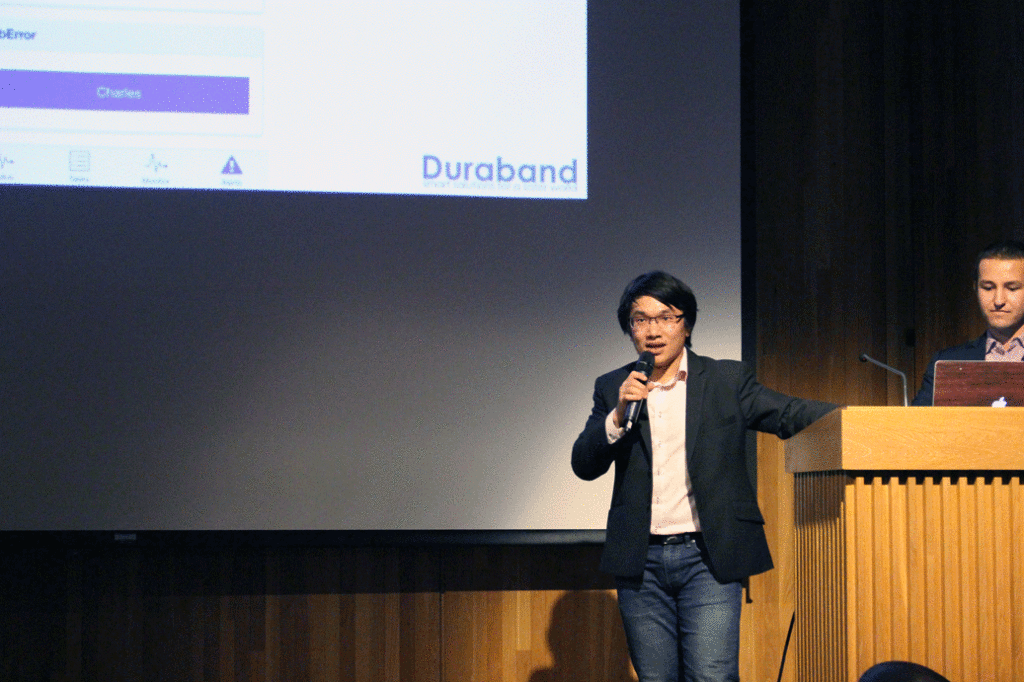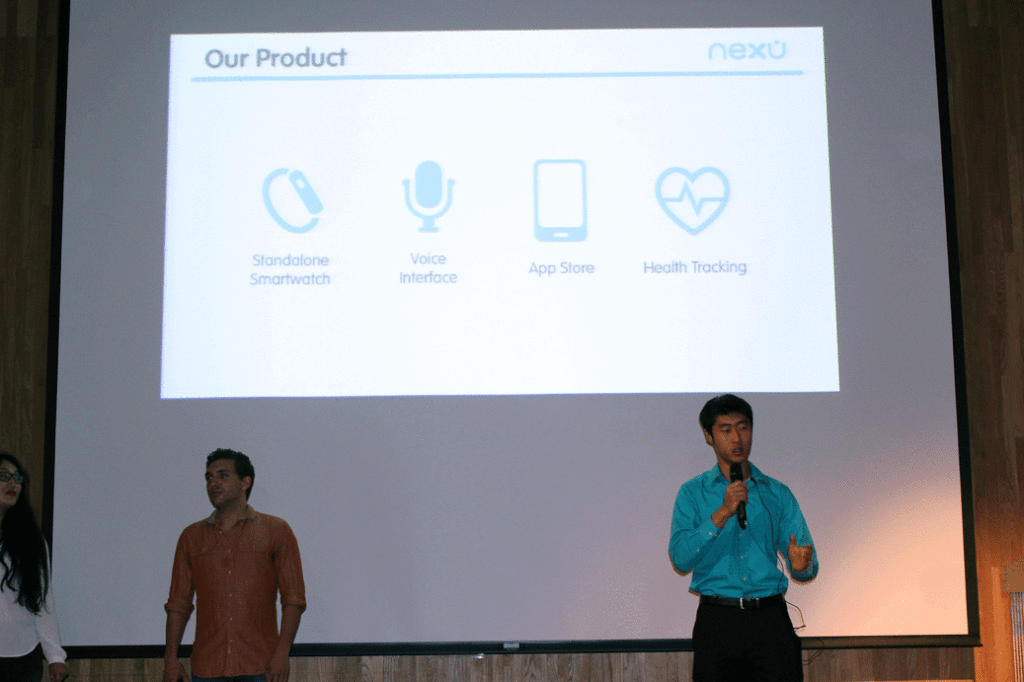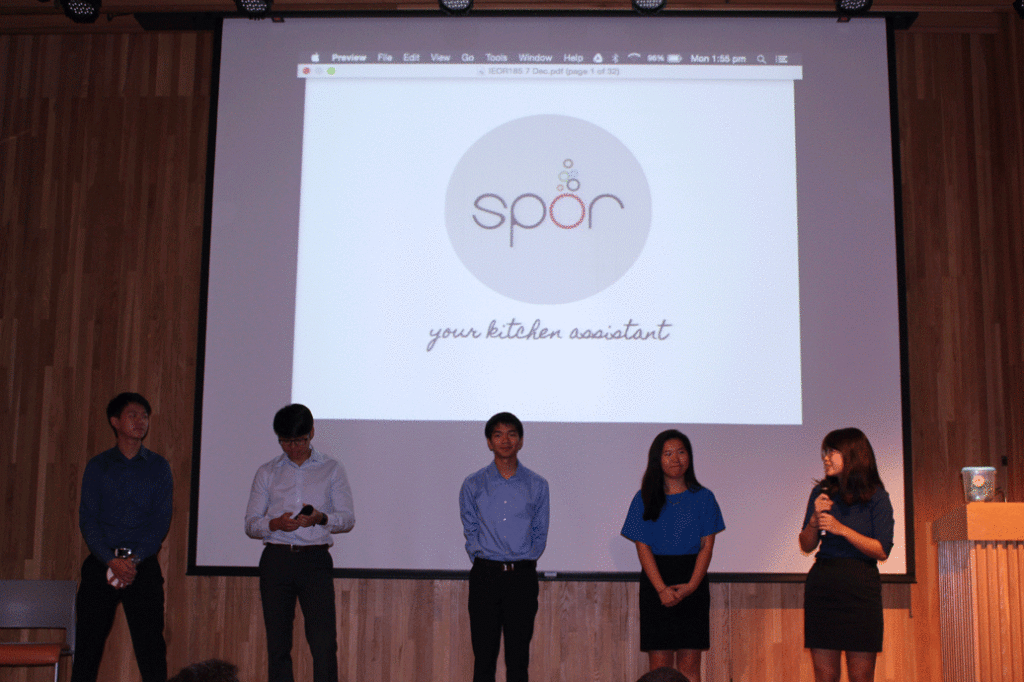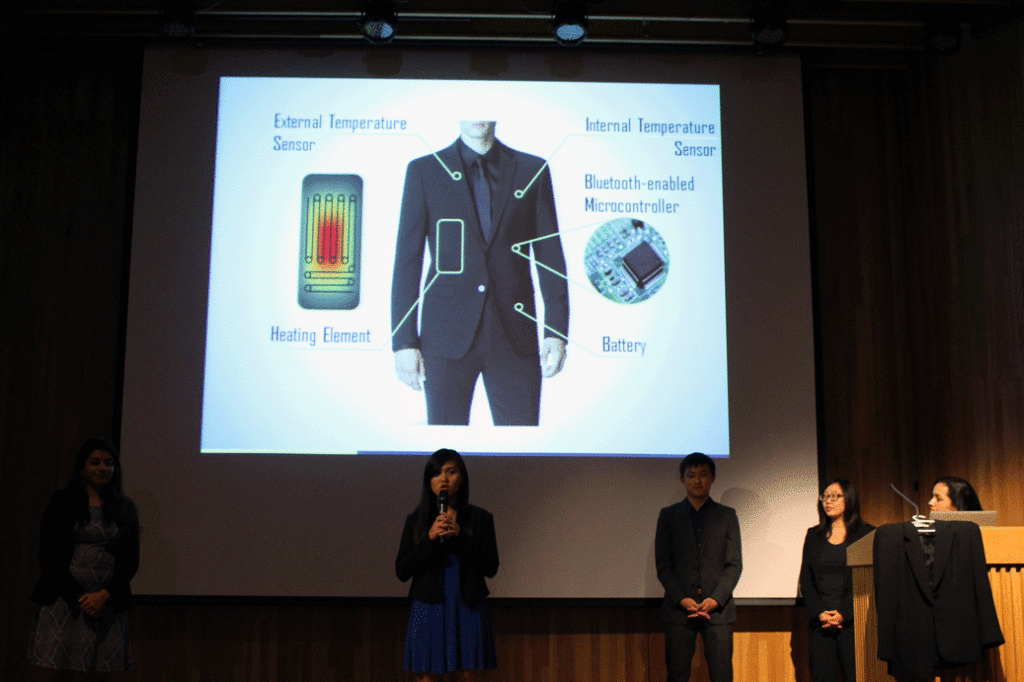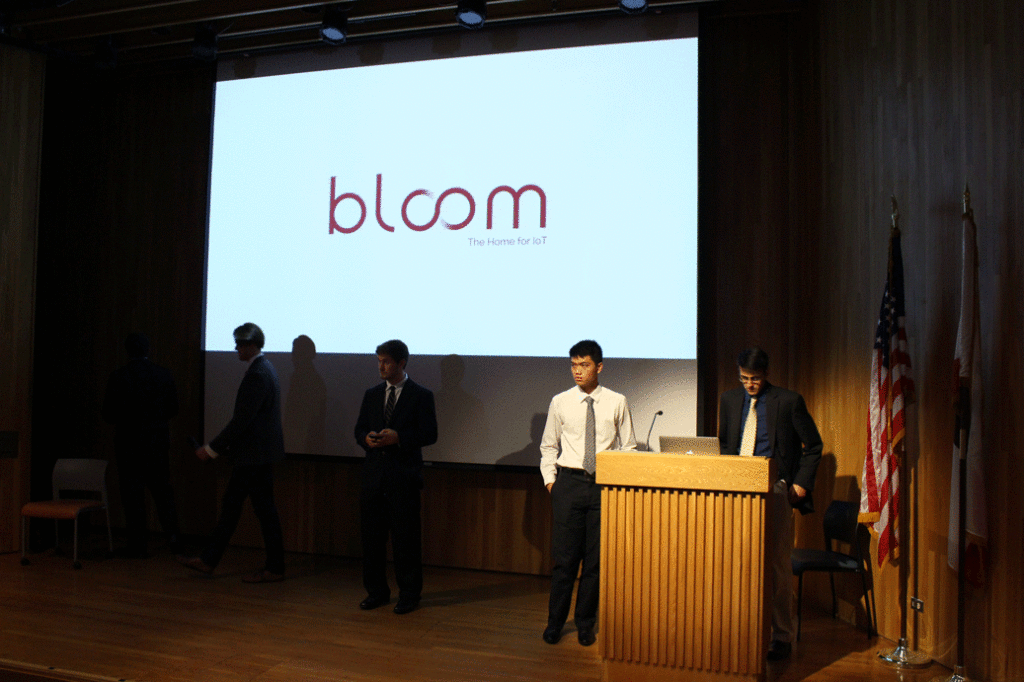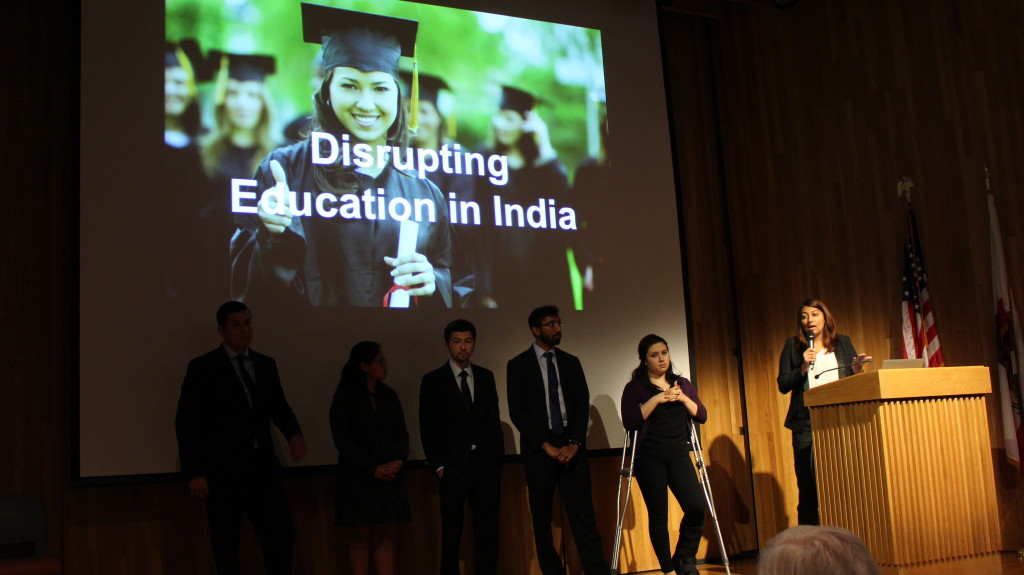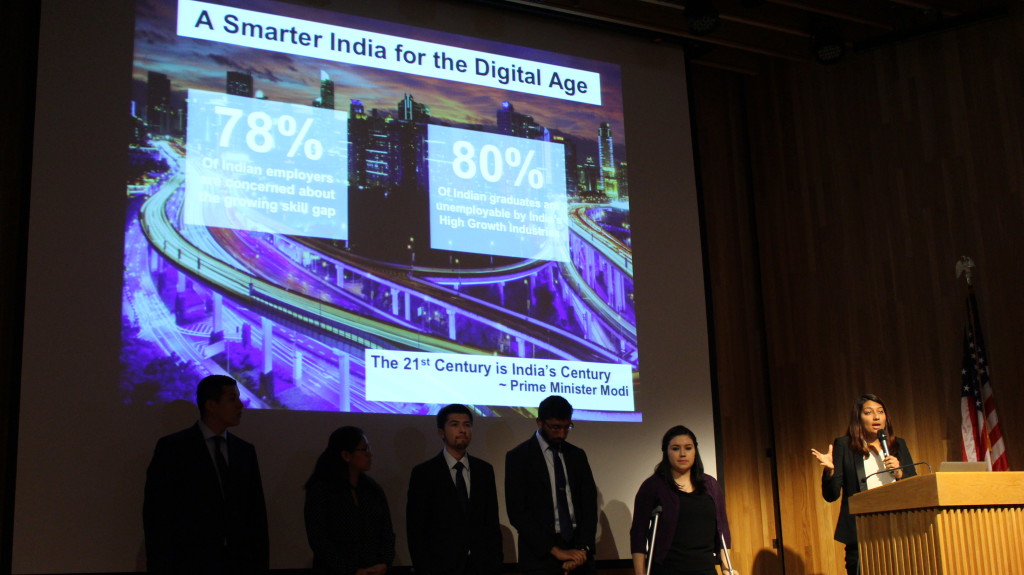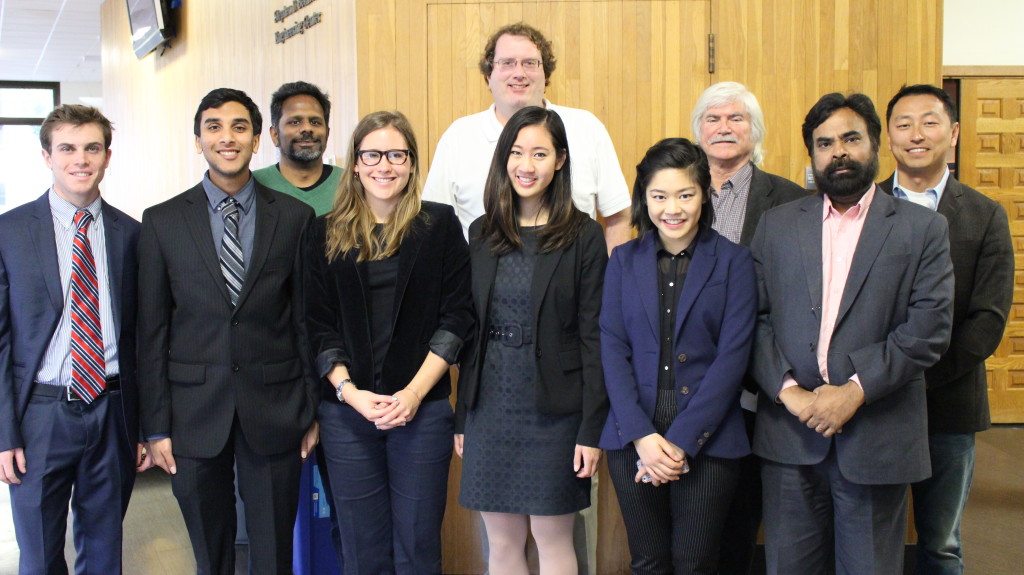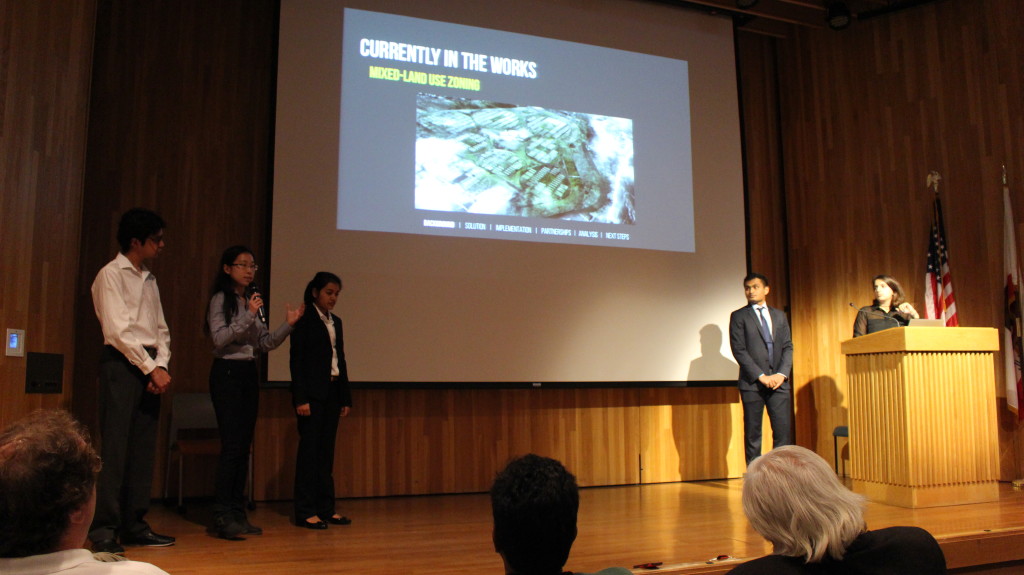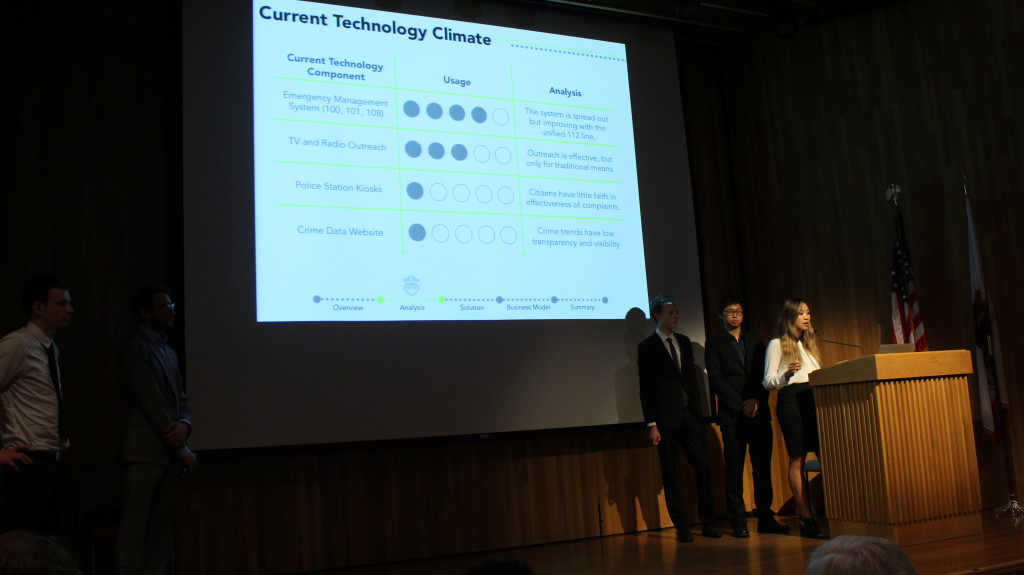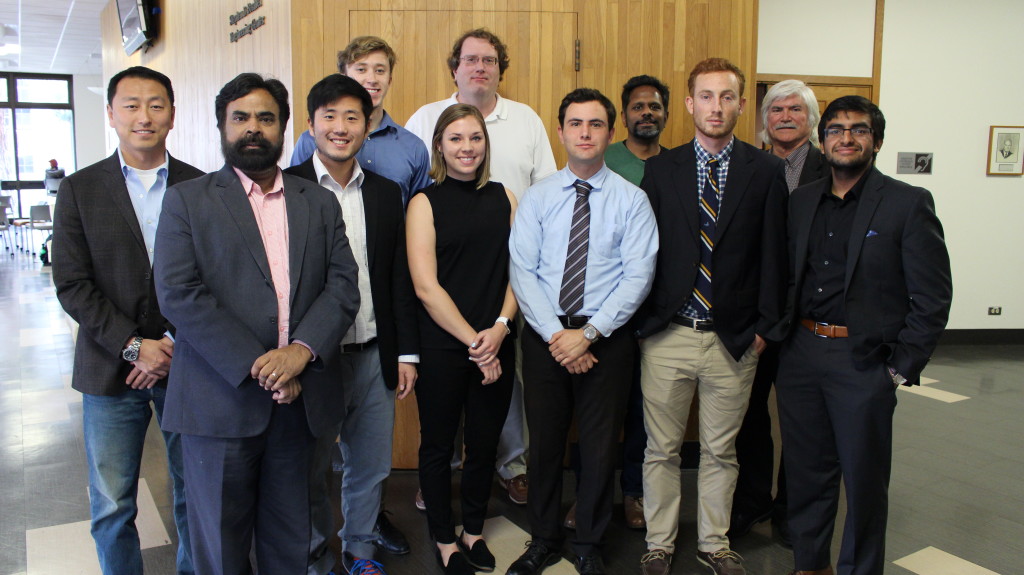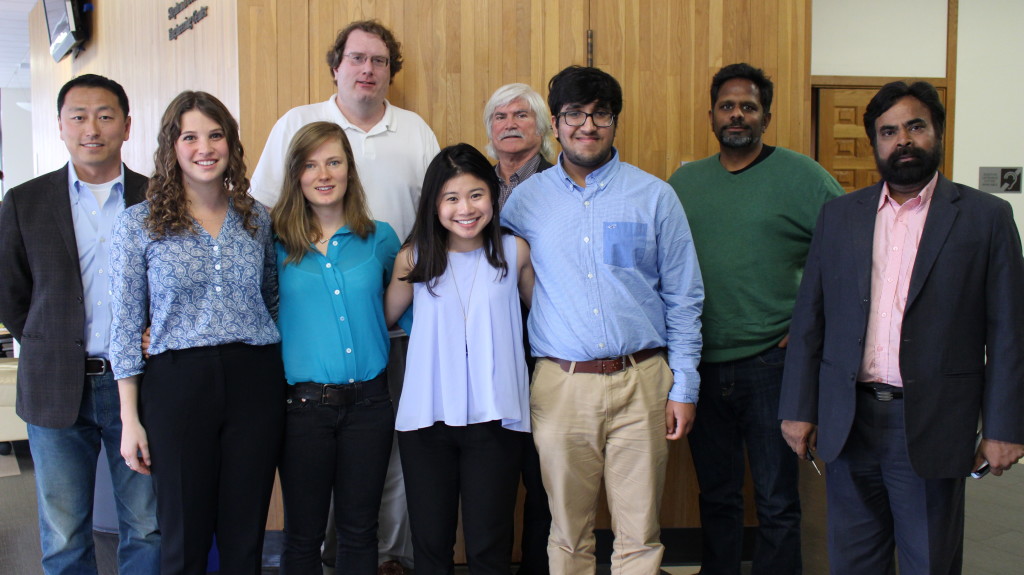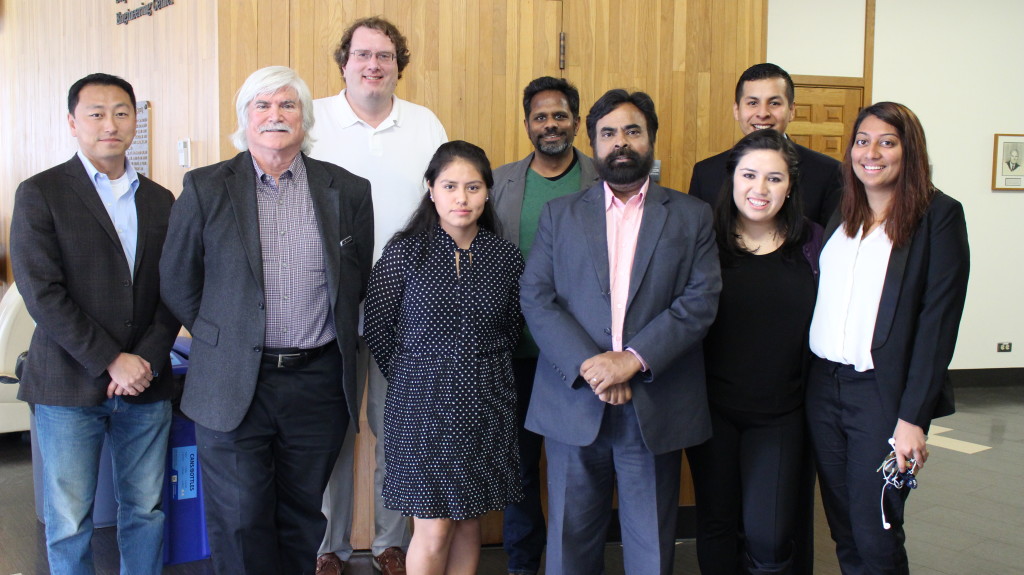Challenge Lab (IEOR 185) uses a competition-based format to teach students how to be entrepreneurs by working in interdisciplinary teams to develop a product. The competition categories this year included ‘Internet of Things’ — an emerging category of connected products that typically focus on solving one issue (e.g. a FitBit) — and ‘Smart Cities India’ — a special project devoted to studying innovative design, layout, and technologies used to create a more effective city.
‘Internet of Things’ category
An egg that monitors fertility and texts your partner ‘hint, hint’ when the time is right, a professional blazer that uses sensors and heating elements to regulate body temperature, a glove that measures rhythm while playing the piano to help students learn — these are just a few of the gadgets invented by students and presented this week for Challenge Lab in the ‘internet of things’ category.
This year’s presentations included:
-
-
Damara – 1st place winner
Delayed child birth, high-cost fertility treatments and other factors can make getting pregnant challenging for many couples. Damara is an egg-shaped assistant that helps women monitor their fertility and ovulation. All the data is stored in a cloud service. When fertility levels are optimal, it texts “hint, hint” to the woman’s partner to let them know that the time is right.
-
Surge – 2nd place winner
Are you a doctor wondering if your patient picked up their prescription? A hospital administrator wanting to check current medical supply stock? Surge is a hospital inventory management system for tracking prescriptions, supplies and other materials in one central database.
-
-
-
Duraband – 3rd place winner
Accidents on construction sites cost developers and insurance companies billions of dollars per year. Duraband is a wristband that helps keep construction workers safe by monitoring body temperature, heart rate, and other indicators that can notify foremen when a worker may be at risk for injury.
-
-
-
Nexu
By 2050 the 65 and older population will grow from 524 million to 1.5 billion people. Nexu is a smartwatch platform that is specifically tailored to help the elderly monitor health and get help quickly when needed.
-
-
-
Spor
Wasting food is a big issue — it is estimated that 30%-50% of food brought home from the grocery store is never eaten, costing families approximately $2,275 annually. Spor is a system that allows the user to keep track of food inventories by scanning receipts and even uses sensors to track ethylene to sense when fruits and vegetables need to be thrown out.
-
-
-
-
Bloom
LinkedIn, GitHub, YouTube, Sketchfab — these are all platforms where creators can showcase their skills. Bloom aims to be a similar platforms where IoT creators can show off their skills, be seen, and get connected to job opportunities.
-
-
-
-
Couplit
Remember promise rings? Well, don’t be surprised if teens in the future wear ‘smart’ versions of these classic symbols of love and commitment. Couplit is a wristband that just you and your partner wear — and on it you will receive personalized messages that only you and your partner can see.
-
‘Smart Cities India’ category
The Smart Cities India initiative is a project that aims to identify and develop 100 cities in India to be ‘smart’ — i.e. have an innovative, open, and sustainable business model, data-based decision making, working and efficient infrastructure, and an overall dynamic and vibrant community. The initiative represents a $15 billion investment from Prime Minister Narenda Modi’s government. Currently, only 31% of India’s population live in urban areas. It is projected that by 2050, that 75% of India’s population will live in urban areas — making smart cities indispensable for the future.
Challenge Lab students are tasked with studying Visakhapatnam — or ‘Vizag’ for short — a city sponsored by President Obama for USTDA investment and one that will serve as a model for the 100 cities in the Smart Cities India plan. The goal for students in Challenge Lab is to capture the lessons being learned in Vizag, evaluate the cost-benefit analysis of public-private partnerships, suggest open platforms for communication to involve the public in decision-making, and conduct data analysis and mining to suggest ways to lower operating costs, develop technological solutions for safety, security, traffic, telecom, etc.
Six groups focused on one aspect of studying Vizag: 1) Energy & Pollution, 2) Food & Water, 3) Housing & Transportation, 4) Communication, 5) Safety & Security, and 6) Education & Entertainment.
Smart Cities Photos
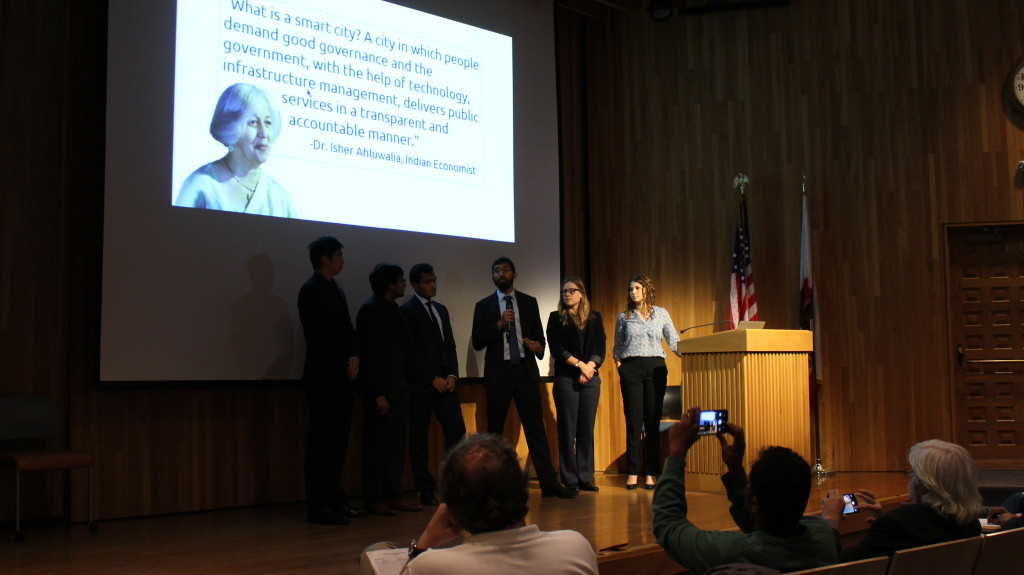
The Smart Cities India capstone group — this group synthesizes all the research from each smart city area.
Students headed to India
The Smart Cities India team will travel to India in early 2016 to present their findings, which will be used to develop Vizag into a model smart city. Good luck team!
Challenge Lab (IEOR 185) uses a competition-based format to teach students how to be entrepreneurs by working in interdisciplinary teams to develop a product. The competition categories this year included ‘Internet of Things’ — an emerging category of connected products that typically focus on solving one issue (e.g. a FitBit) — and ‘Smart Cities India’ — a special project devoted to studying innovative design, layout, and technologies used to create a more effective city.
‘Internet of Things’ category
An egg that monitors fertility and texts your partner ‘hint, hint’ when the time is right, a professional blazer that uses sensors and heating elements to regulate body temperature, a glove that measures rhythm while playing the piano to help students learn — these are just a few of the gadgets invented by students and presented this week for Challenge Lab in the ‘internet of things’ category.
This year’s presentations included:
-
-
Damara – 1st place winner
Delayed child birth, high-cost fertility treatments and other factors can make getting pregnant challenging for many couples. Damara is an egg-shaped assistant that helps women monitor their fertility and ovulation. All the data is stored in a cloud service. When fertility levels are optimal, it texts “hint, hint” to the woman’s partner to let them know that the time is right.
-
Surge – 2nd place winner
Are you a doctor wondering if your patient picked up their prescription? A hospital administrator wanting to check current medical supply stock? Surge is a hospital inventory management system for tracking prescriptions, supplies and other materials in one central database.
-
-
-
Duraband – 3rd place winner
Accidents on construction sites cost developers and insurance companies billions of dollars per year. Duraband is a wristband that helps keep construction workers safe by monitoring body temperature, heart rate, and other indicators that can notify foremen when a worker may be at risk for injury.
-
-
-
Nexu
By 2050 the 65 and older population will grow from 524 million to 1.5 billion people. Nexu is a smartwatch platform that is specifically tailored to help the elderly monitor health and get help quickly when needed.
-
-
-
Spor
Wasting food is a big issue — it is estimated that 30%-50% of food brought home from the grocery store is never eaten, costing families approximately $2,275 annually. Spor is a system that allows the user to keep track of food inventories by scanning receipts and even uses sensors to track ethylene to sense when fruits and vegetables need to be thrown out.
-
-
-
-
Bloom
LinkedIn, GitHub, YouTube, Sketchfab — these are all platforms where creators can showcase their skills. Bloom aims to be a similar platforms where IoT creators can show off their skills, be seen, and get connected to job opportunities.
-
-
-
-
Couplit
Remember promise rings? Well, don’t be surprised if teens in the future wear ‘smart’ versions of these classic symbols of love and commitment. Couplit is a wristband that just you and your partner wear — and on it you will receive personalized messages that only you and your partner can see.
-
‘Smart Cities India’ category
The Smart Cities India initiative is a project that aims to identify and develop 100 cities in India to be ‘smart’ — i.e. have an innovative, open, and sustainable business model, data-based decision making, working and efficient infrastructure, and an overall dynamic and vibrant community. The initiative represents a $15 billion investment from Prime Minister Narenda Modi’s government. Currently, only 31% of India’s population live in urban areas. It is projected that by 2050, that 75% of India’s population will live in urban areas — making smart cities indispensable for the future.
Challenge Lab students are tasked with studying Visakhapatnam — or ‘Vizag’ for short — a city sponsored by President Obama for USTDA investment and one that will serve as a model for the 100 cities in the Smart Cities India plan. The goal for students in Challenge Lab is to capture the lessons being learned in Vizag, evaluate the cost-benefit analysis of public-private partnerships, suggest open platforms for communication to involve the public in decision-making, and conduct data analysis and mining to suggest ways to lower operating costs, develop technological solutions for safety, security, traffic, telecom, etc.
Six groups focused on one aspect of studying Vizag: 1) Energy & Pollution, 2) Food & Water, 3) Housing & Transportation, 4) Communication, 5) Safety & Security, and 6) Education & Entertainment.
Smart Cities Photos

The Smart Cities India capstone group — this group synthesizes all the research from each smart city area.
Students headed to India
The Smart Cities India team will travel to India in early 2016 to present their findings, which will be used to develop Vizag into a model smart city. Good luck team!


